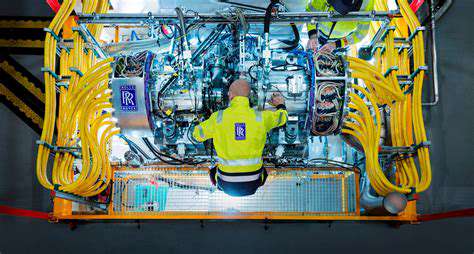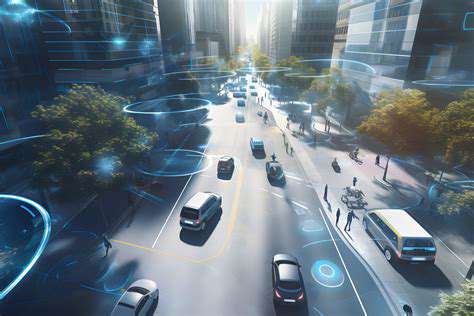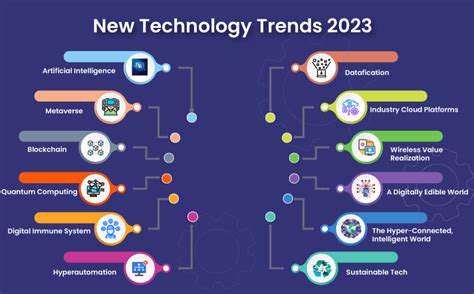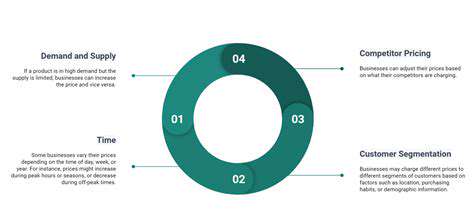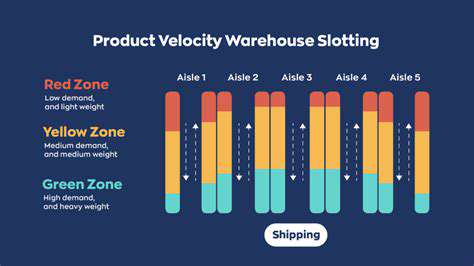Smart Grids and Decentralized Energy Systems
Understanding the Smart Grid
Smart grids represent a significant evolution in electricity infrastructure, moving away from the traditional, centralized model towards a more distributed and interactive system. This transformation is crucial for managing energy resources more efficiently, integrating renewable energy sources, and improving grid resilience. The core principle lies in utilizing advanced technologies to monitor, control, and optimize the flow of electricity in real-time, enabling a more responsive and intelligent power grid.
This intelligence allows for better integration of renewable energy sources like solar and wind, which often have fluctuating output. Smart grids can dynamically adjust to these changes, ensuring a stable and reliable power supply. Furthermore, they facilitate proactive maintenance, reducing outages and improving overall grid reliability.
Key Technologies Driving Smart Grids
Several key technologies are essential to the functionality of smart grids. These include advanced metering infrastructure (AMI), which provides real-time energy consumption data to both consumers and utilities. This data empowers consumers to make informed decisions about their energy usage and facilitates dynamic pricing schemes, rewarding conservation efforts.
Communication networks, such as advanced communication protocols and dedicated communication networks, are vital to relaying information throughout the grid. These networks facilitate the two-way communication essential for real-time monitoring and control.
Benefits of Smart Grid Implementation
The benefits of transitioning to a smart grid extend beyond improved efficiency. Reduced energy loss throughout the distribution system is a major advantage. This reduction translates into significant financial savings for both utilities and consumers. Optimized energy distribution also contributes to reduced greenhouse gas emissions, aligning with sustainability goals.
Enhanced grid stability and resilience to outages and extreme weather events are other crucial benefits. The real-time monitoring and control capabilities of smart grids allow for faster response times during disruptions, minimizing the duration and impact of outages. This improved resilience is paramount for maintaining critical services in emergency situations.
Challenges in Smart Grid Deployment
Despite the numerous benefits, implementing smart grids comes with its own set of challenges. One significant hurdle is the substantial investment required for the infrastructure upgrades necessary to support the new technologies. This includes installing advanced meters, upgrading communication networks, and potentially transforming existing grid components.
Data security is another critical concern. The vast amount of data collected and transmitted by smart grids makes them vulnerable to cyberattacks. Robust security measures and protocols are essential to protect the integrity of the system and maintain consumer trust.
Consumer Engagement and Participation
Smart grids empower consumers to become active participants in the energy system. Through real-time feedback on their energy consumption, consumers can identify areas for improvement and make conscious choices to reduce their environmental impact. This level of engagement is crucial for fostering a sense of shared responsibility in achieving sustainable energy goals.
Dynamic pricing models, enabled by smart grids, can incentivize energy conservation by charging higher rates during peak demand periods. This system rewards consumers for using energy during off-peak hours, fostering a shift in energy consumption patterns.
The Future of Smart Grids
The future of smart grids is inextricably linked with the advancement of renewable energy technologies. As renewable energy sources become more prevalent, smart grids will play a critical role in managing the intermittent nature of their output. This includes sophisticated forecasting tools and grid optimization algorithms to ensure a reliable and sustainable energy system.
Furthermore, the integration of electric vehicles (EVs) into the grid will necessitate further advancements in smart grid technology. Smart grids will need to accommodate the fluctuating demands of charging stations and manage the influx of EVs into the system.
Integration with Other Technologies
Smart grids are not an isolated technology; they have the potential to integrate seamlessly with other technological advancements, such as advanced analytics and artificial intelligence. These tools can be applied to enhance grid monitoring, optimize energy distribution, and predict potential issues before they arise.
The integration of smart grids with other smart technologies in the broader energy sector will create a more interconnected and efficient energy ecosystem, paving the way for a truly intelligent and sustainable energy future.
Core engagement is crucial for cyclists of all levels, from recreational riders to professional racers. A strong core not only improves power transfer and efficiency during pedaling but also contributes significantly to stability and balance, especially during challenging terrain or when maneuvering in tight spaces. Developing core strength directly translates to better control over your bike, allowing for smoother transitions and more precise steering. This enhanced control is especially beneficial in navigating technical climbs or descents, where maintaining balance is paramount to preventing falls and injuries.
The Future of Energy: A Synergistic Approach
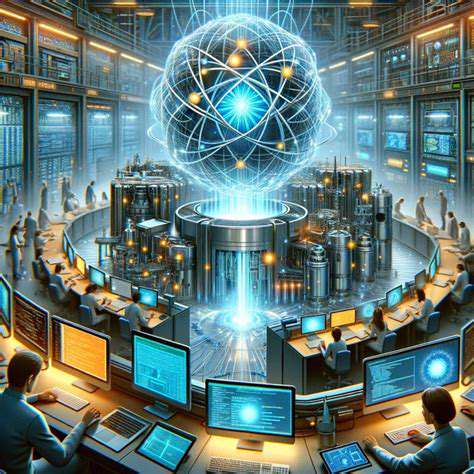
Harnessing Renewable Sources
The transition to a sustainable energy future hinges on our ability to effectively harness renewable sources. Solar, wind, and hydro power offer compelling alternatives to fossil fuels, promising a cleaner and more environmentally friendly energy landscape. Technological advancements in solar panel efficiency and wind turbine design are continuously pushing the boundaries of renewable energy production, making it increasingly cost-competitive with traditional methods. Furthermore, advancements in energy storage solutions are crucial to address the intermittent nature of some renewables, allowing for a more reliable and consistent energy supply.
Integrating these renewable sources into existing energy grids requires significant infrastructure investments and careful planning. Smart grids, equipped with advanced sensors and communication technologies, can optimize energy distribution and ensure seamless integration of fluctuating renewable energy inputs. This transition also necessitates a shift in societal attitudes and behaviors, encouraging energy conservation and promoting responsible consumption patterns.
Exploring Emerging Technologies
Beyond established renewables, emerging technologies are poised to revolutionize the energy sector. Concentrated solar power (CSP) systems, for example, are exploring innovative ways to capture and store solar energy for use during periods of low sunlight. These technologies represent a promising avenue for addressing the intermittency challenges often associated with renewable energy sources. Furthermore, research into advanced battery technologies is crucial for improving energy storage capacity and efficiency, paving the way for a more reliable and sustainable energy future.
Nuclear fusion, while still in its early stages of development, holds the potential to unlock virtually limitless clean energy. The immense energy potential of nuclear fusion could completely transform the global energy landscape, offering an environmentally friendly alternative to fossil fuels. However, significant technological hurdles remain, and extensive research and development are needed to make fusion a viable energy source.
Enhancing Energy Efficiency
A crucial component of a sustainable energy future is the enhancement of energy efficiency across all sectors. Implementing energy-efficient building designs, upgrading industrial processes, and promoting the adoption of electric vehicles are all critical steps in reducing our overall energy consumption. This approach not only mitigates our environmental footprint but also fosters economic benefits by reducing energy costs and promoting innovation in energy-saving technologies.
Investing in smart appliances and promoting energy-efficient practices in everyday life are crucial steps in realizing these goals. By leveraging smart technologies and promoting responsible energy consumption habits, we can significantly reduce energy waste and pave the way for a more sustainable and resilient energy system.
Read more about Smart Grids and Decentralized Energy Systems
Hot Recommendations
- Offshore Wind for Industrial Power
- Agrivoltaics: Dual Land Use with Solar Energy Advancements: Sustainable Farming
- Hydrogen as an Energy Storage Medium: Production, Conversion, and Usage
- Utility Scale Battery Storage: Successful Project Case Studies
- The Role of Energy Storage in Grid Peak Shaving
- The Role of Startups in Renewable Energy
- The Role of Blockchain in Decentralization of Energy Generation
- The Future of Wind Energy Advancements in Design
- Synchronous Condensers and Grid Inertia in a Renewable Energy Grid
- Corporate Renewable Procurement for Government Agencies

